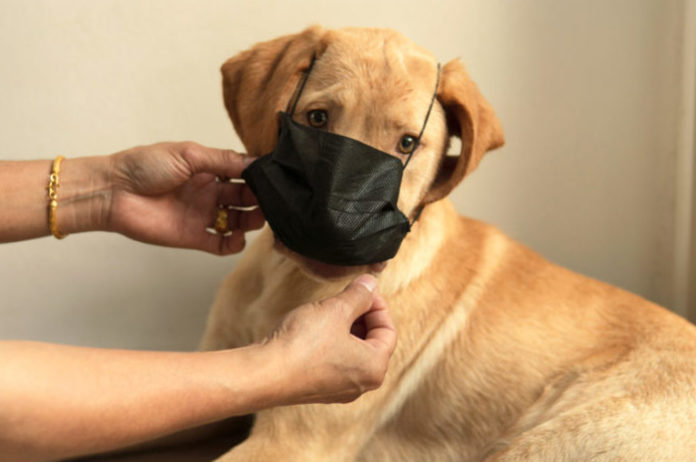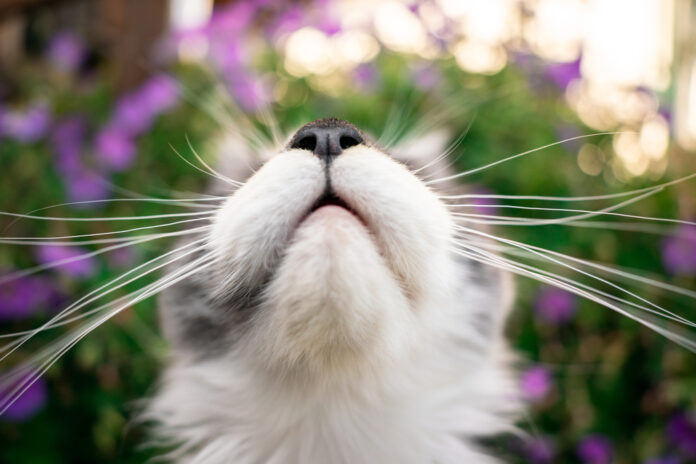Improving indoor air quality for your animal

You might think the air inside your home is fine, but airborne pathogens and other toxins may be having an impact on your dog or cat’s health. Find out what these invisible bad guys are and how your can improve your indoor air quality.
What’s in the air your dog or cat breathes? Believe it or not, indoor air quality plays a big role in her health, so it’s important to know what she’s inhaling, especially as she probably spends a lot more time inside the house than you do. This article covers some common air contaminants, and how to get rid of them.
Something in the air
Infectious agents
It’s easy to see how infectious diseases can spread through direct contact, but some also spread through the air. Canine influenza and kennel cough are two examples. When an infected animal coughs, sneezes or barks, she releases microscopic pathogens into the air. While some of these pathogens are large and heavy enough to fall onto surfaces where they can be eliminated with surface cleaning, most are “aerosolized”. These virtually invisible infectious pathogens can remain viable (alive and able to infect) in the air for extended periods, clinging to tiny dust particles, riding on air currents, and traveling throughout the environment until inhaled by another host.
Allergens
Pollen and mold spores are airborne allergens that trigger allergies in both people and animals. A sensitive dog or cat may develop itchy watery eyes, nasal discharge or skin problems. In the Extreme Allergies and Global Warming report issued by the Asthma and Allergy Foundation of America (AAFA), in conjunction with the National Wildlife Federation, climate change is predicted to worsen respiratory allergies (and increase the risks for asthma) thanks to more pollen, among other allergens. According to the AAFA, warmer temperatures in the US between 1995 and 2011 caused the pollen season to be 11 to 27 days longer. Warmer temperatures create more pollen and therefore more airborne allergens. While pollen is more of an outdoor air quality issue, it can also enter homes through open windows, gaps around doors, and even on your dog or cat’s coat. Mold meanwhile, can form in basements, bathrooms and other areas.
VOCs
Volatile (easily evaporated) organic compounds (VOCs) encompass a large class of chemical compounds and are emitted by a plethora of chemically-scented products in your home. They’re released by many scented shampoos, detergents, fabric softeners, dryer sheets, grooming sprays, surface cleaners and aerosol air fresheners. Fresh paint, new flooring and furniture can also emit VOCs. These airborne compounds can cause a range of health issues for your animals (and your human family), including allergic reactions, headaches, nausea and even liver or kidney damage.
In “Why artificial scents are harming your pets”, author Sara Jackson cites a study conducted by the Environmental Working Group that “tested 43 common chemicals found in household products, including scented ones, and discovered that dogs have higher levels of these substances in their bodies than humans do.” She then poses the question of how that’s possible “when many of these products don’t seem to come into direct contact with your animal?” The answer, according to veterinarian Dr. Gloria Dodd, is that “there are two main ways animals come into contact with fragrance chemicals — by inhaling the fumes or rubbing against your clothes or skin.” Dr. Dodd goes on to say: “Researchers have found that through inhalation, these chemicals get into the animal’s bloodstream and affect every organ the blood touches.”
If infectious diseases and allergies are caused by airborne pathogens and contaminants that can’t be seen, and VOCs are likewise floating invisibly in the air, how can they be prevented? By doing what you can to clean the air, which is easier than you might think.
How many times did you breathe when you read this article? What about your dog or cat lying next to you? The value of clean healthy air is almost incalculable. Educating yourself on how infectious diseases, allergens and VOCs are spread through the air is an important first step to helping create a healthy indoor environment for you and your animal. Doing what you can to clean the air of these invisible but harmful agents is even more important (see below). The well-being of your four-legged friends – and your own – is worth it.
6 ways to clean up the air
- Good ventilation is one way to help keep indoor air cleaner. On clear days (when pollen counts aren’t high!), open the windows and let the breezes blow through. Regularly check any vents to the outside to make sure they’re not obstructed and are working properly.
- Address any mold problems in your home, and avoid bringing cut flowers or flowering plants into the house if pollen allergies are an issue with your dog or cat (this is a good idea anyhow, since many plants are also toxic if ingested).
- Keep your dog or cat free of infectious diseases by ensuring she has received her core vaccines, and have titer testing done each year to make sure she’s still protected. Also be sure to keep her away from sick animals; in particular, don’t take her into a home or other building where there are ill dogs or cats.
- Avoid or minimize the use of products that contain VOCs. Opt for natural household cleaners, detergents and grooming products, for example. When redecorating, look for low-VOC paint, and consider natural flooring surfaces.
- Air purifiers are another option. They work by passing the air through a filter system that removes airborne pathogens such as pollen, dust and bacteria. There are lots of models on the market, some better and more efficient than others. Some produce ozone, which can be harmful to your animals, so do your homework and choose a safe quality product.
- A UVGI system is another effective way to clean the air in your home. It uses ultraviolet germicidal irradiation lamps to clean and sanitize the air (see page above for more info about this technology).




